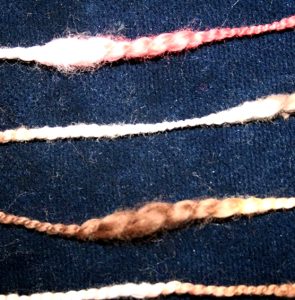Fabrics in the textile industry often have similar appearances, but their production methods give them distinct characteristics that set them apart from one another. Two such renowned fabric types, Nep fabric and Slub fabric, may appear closely related at first glance, but a deeper exploration reveals their unique qualities and the distinct yarns from which they are crafted.
Nep
“Nep” refers to small knots or clusters of fibers that become entangled in yarns or fabrics. These neps, whether natural or artificial, significantly impact the appearance and texture of the textile.
Nep Yarn: Nep yarn is a deliberate creation, containing small, irregular clusters of fibers that aren’t fully integrated into the main yarn structure. These neps can form during various stages of yarn production, such as spinning or carding, leading to a textured or irregular surface. Intentional use of neps can result in a rustic appearance, while unintentional neps may occur due to variations in fiber length, quality, or processing techniques.
Nep Fabric: Nep fabric incorporates yarns with intentional neps, resulting in a textured or speckled appearance on the fabric’s surface. It finds applications in various textiles, including fashion and home textiles, where the irregular texture adds visual interest and a unique aesthetic. Nep fabrics can be crafted from different fibers, allowing for a wide range of design possibilities.
Slub
“Slub” refers to intentional irregularities, featuring thick or thin sections introduced into yarn or fabric to create a textured and uneven appearance.
Slub Yarn: Slub yarn is intentionally crafted to incorporate thick or thin sections, resulting in irregularities in diameter and texture along its length. These intentional slubs, introduced during the spinning process, create a textured and uneven surface on the yarn, serving as a design feature rather than a flaw.

Slub Fabric: Slub fabric is crafted using slub yarns, resulting in a textured appearance on the fabric’s surface. Popular in fashion and home textiles, intentional slubs contribute to a visually interesting and slightly uneven texture in the finished product. Manufacturers intentionally introduce slubs to create a unique and visually appealing fabric, with the deliberate irregularities serving as a sought-after design feature.

Summary
In summary, while both Nep fabric and Slub fabric involve intentional irregularities in their yarns, the key distinction lies in their respective characteristics. Nep fabric incorporates small, irregular clusters of fibers, either intentionally or unintentionally introduced, while Slub fabric intentionally features irregularities in yarn thickness. Understanding these differences allows designers and consumers alike to appreciate the unique visual and tactile qualities each fabric brings to the textile world.
source:Linkedin

 فارسی
فارسی


